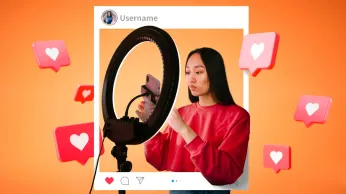Innovative Loyalty Marketing Strategies You Must Implement in 2025
Innovative loyalty marketing strategies that enhance customer experiences and drive long-term loyalty. Explore personalization, gamification, and seamless integration techniques to create impactful loyalty programs.
On this page
The importance of innovative loyalty marketing strategies becomes increasingly evident. Recent data indicates that nearly 70% of brands have experienced heightened customer engagement through their loyalty initiatives, with 58% noting an increase in repeat purchases.
Additionally, 40% of loyalty programs have achieved higher redemption rates by tailoring rewards to individual preferences.
These statistics underscore the growing significance of personalized and engaging loyalty programs in fostering customer retention and driving repeat business. As consumer expectations evolve, businesses must adapt by implementing innovative strategies that not only attract new customers but also cultivate lasting relationships with existing ones.
In this blog, we will explore the latest trends and effective approaches in loyalty marketing for 2025, providing insights into how businesses can enhance customer engagement and loyalty through innovative strategies.
What is loyalty marketing?
Loyalty marketing focuses on building and maintaining long-term relationships with customers by encouraging repeat purchases and fostering brand loyalty. It’s a strategy aimed at rewarding existing customers for their continued business while creating a sense of value and appreciation.
Loyalty marketing is effective because retaining customers is significantly more cost-efficient than acquiring new ones. According to research, increasing customer retention by just 5% can boost profits by 25% to 95%. Moreover, 81% of consumers are more likely to remain loyal to brands that offer a rewarding experience.
This approach often includes initiatives like rewards programs, exclusive offers, and personalized communications that create meaningful connections between brands and their customers. When executed effectively, loyalty marketing transforms one-time buyers into advocates who drive sustainable growth.
How much does innovation matter?
Innovation drives the success of loyalty marketing strategies by meeting evolving customer expectations and staying ahead of trends. Traditional programs that only offer points or discounts often fail to engage modern consumers, who now seek personalized experiences, convenience, and value beyond transactions.
Brands that embrace new approaches see tangible results. A study by McKinsey found that companies excelling in personalization achieve 40% more revenue than those that do not.
Innovation also opens opportunities to incorporate tools like AI-driven insights, real-time rewards, and gamification. These methods increase engagement and retention, making loyalty efforts more effective. Staying innovative ensures that businesses not only meet customer needs but also foster deeper relationships that drive growth.
Importance of customer loyalty in business success
Customer loyalty is vital to businesses’ long-term success across industries. When customers feel a strong sense of loyalty towards a brand, they are more likely to make repeat purchases and resist the allure of competitors. Let’s delve into why customer loyalty is crucial for business success:
1. Increased revenue
Loyal customers tend to spend more than new customers. Therefore, increasing customer retention can help businesses see their profits skyrocket.
Loyal customers make frequent purchases and have a higher average order value. All these factors positively contribute to a company’s bottom line.
2. Cost efficiency
Acquiring new customers can be significantly more expensive than retaining existing ones.
📖For example, studies have shown that acquiring a new customer can be five times more costly.
However, businesses can reduce marketing and acquisition costs while maximizing their return on investment by focusing on customer loyalty.
3. Positive word-of-mouth and referrals
Loyal customers are likelier to recommend a brand to their friends, family, and colleagues.
📖According to Nielsen, 88% of consumers trust recommendations from people they know.
Positive word-of-mouth and referrals bring in new customers and build credibility and trust. Businesses expand their customer base organically.
4. Competitive advantage
In today’s crowded marketplace, where customers have numerous options, fostering loyalty can provide a competitive edge.
In addition, increasing customer retention can lead to increased profits compared to competitors focusing solely on acquisition.
5. Brand advocacy and emotional connection
Loyal customers often become brand advocates, championing the brand and its values.
These customers develop an emotional connection with the brand, making it more difficult for competitors to sway them. Emotional loyalty creates a deeper bond, leading to long-term relationships beyond transactional interactions.
Key components of an effective customer loyalty marketing strategy
Businesses need to implement a well-designed brand loyalty marketing strategy to unlock the power of customer loyalty.
Here are the key elements that play a crucial role in creating an effective customer loyalty marketing strategy:
1. Customer segmentation and targeting
One size does not fit all when it comes to loyalty marketing. Understanding your customer base and segmenting them based on demographics, behavior, or preferences is essential.
Identify distinct customer segments that will help you tailor your loyalty programs and communication strategies to cater to each group’s needs.
2. Rewards and incentives
Rewards are the heart of any loyalty program. Offering attractive rewards and incentives encourages customers to participate and remain loyal.
These rewards can be in the form of discounts, exclusive access, freebies, or points-based systems. The key is to align the rewards with your customers’ desires and ensure they feel appreciated for their loyalty.
3. Personalization and customization
Customers today expect personalized experiences. A successful loyalty marketing strategy involves leveraging customer insights to deliver tailored offers and recommendations.
Personalizing customer interactions also allows you to create a more profound sense of connection and relevance.
4. Communication and engagement
Effective communication is vital in a loyalty marketing strategy. Regularly engage with your customers through email marketing, social media, or mobile apps. Listen to customer feedback and respond promptly.
With Loyalife Engage, businesses can move beyond generic messages and create personalized customer experiences. This feature enables you to send targeted messages, exclusive offers, and relevant content based on customer behavior, preferences, and purchase history.
Whether through email campaigns, mobile apps, or social media channels, Loyalife Engage ensures consistent and meaningful interactions. It helps brands foster deeper relationships, increase customer engagement, and build lasting loyalty. Plus, automated workflows make it easier to deliver the right message at the right time, enhancing customer satisfaction without the extra effort.
5. Customer data and analytics
Customer data plays a crucial role in loyalty marketing strategy. Customer data is the foundation for making informed decisions in a loyalty marketing strategy.
Loyalife’s custom measurement feature allows businesses to dive deep into customer insights, tracking behaviors, purchase patterns, and engagement trends. This advanced analytics tool helps identify what drives customer loyalty, which rewards are most effective, and where improvements are needed.
With real-time dashboards and detailed reporting, businesses can monitor the performance of their loyalty programs, spot emerging trends, and adapt strategies quickly. By leveraging these insights, you can make data-driven decisions that not only optimize your loyalty initiatives but also maximize customer retention and lifetime value.
6. Seamless user experience
A user-friendly and seamless experience is essential for a successful loyalty marketing strategy. Ensure your program is easy to understand and join. Invest in user-friendly technology, mobile applications, or online platforms that provide a smooth and intuitive experience.
The easier it is for customers to engage with your loyalty program, the more likely they are to participate and remain loyal.
Proven loyalty marketing strategies that deliver results
Implementing a loyalty marketing strategy is not just about having a program in place but also employing strategies that deliver tangible results.
Here are some proven loyalty marketing strategies that have consistently shown their effectiveness in fostering customer loyalty and driving business growth:
1. Tiered rewards programs
Tiered loyalty programs give customers a sense of achievement and progression as they earn more rewards by reaching higher tiers. The loyalty marketing strategy incentivizes customers to stay engaged and continue making purchases to unlock better rewards.
Different tiers based on customer spending and engagement levels help businesses motivate customers to increase loyalty and spending.
You can leverage Loyalife’s Loyalty Engine to create customized tiered loyalty programs that reward customers as they move up through different levels. By setting clear milestones and offering exclusive perks at each tier, you can motivate customers to stay engaged, increase their spending, and build long-term loyalty. This sense of achievement encourages repeat purchases and long-term loyalty, as customers strive to unlock better perks and feel valued at every stage of their journey with your brand.
2. Gamification
Incorporating gamification elements in loyalty programs adds an element of fun and excitement, making the experience more engaging for customers.
Some popular options can include challenges, badges, leaderboards, or points-based competitions that encourage customers to interact more with the program and strive for rewards. In addition, gamification loyalty strategies tap into customers’ innate desire for competition and achievement, increasing their loyalty and participation.
3. Surprise and delight rewards
Unexpected rewards and surprises can delight customers, leaving a lasting impression and strengthening their loyalty. Random acts of generosity, exclusive offers, or personalized gifts can make customers feel valued and appreciated.
In addition, surprise rewards drive immediate customer satisfaction and encourage ongoing engagement and word-of-mouth promotion.
With Loyalife’s rewards marketplace, businesses can easily implement such surprise elements into their loyalty programs. Offering over 10 million reward options across various categories—including gift cards, merchandise, travel, and experiences—Giift enables companies to provide personalized and unexpected rewards that resonate with individual customer preferences. This extensive selection ensures that surprises remain fresh and exciting, further enhancing customer engagement and fostering long-term loyalty.
4. Referral programs
Referral programs leverage the power of satisfied customers to bring in new customers. Businesses can focus on offering incentives to customers who refer their friends or family members to benefit from the trust and influence of existing customers.
Referral programs attract new customers and reward loyal customers for their advocacy, creating a win-win situation for both parties.
5. Emotional branding
Building an emotional connection with customers is a powerful loyalty marketing strategy. You can create a deeper bond beyond transactional interactions by aligning your brand values with customers’ values and aspirations.
Emotional branding strategies can involve storytelling, cause-related initiatives, or community-building efforts. These strategies help forge an emotional connection with customers and foster long-term loyalty.
6. Exclusive benefits and privileges
Providing exclusive benefits and privileges to loyal customers makes them feel valued. It can include early access to new products or services, VIP events, personalized recommendations, or dedicated customer support.
You can reward loyalty and create a sense of exclusivity that reinforces customer commitment by offering exclusive perks.
Relevance of personalization and data-driven strategies in loyalty marketing
Let’s delve into the relevance of personalization and data-driven strategies.
1. Tailoring experiences through personalization
Personalization is no longer a luxury; it has become a customer expectation. As a result, consumers will purchase when brands offer personalized experiences.
And doing that is easy as businesses can utilize customer data like purchase history, browsing behavior, and demographic information.
It allows businesses to customize offers, recommendations, and communications to meet customers’ needs and interests. As a result, personalization enhances customer satisfaction and strengthens the bond with the brand.
2. Enhanced customer loyalty through personalized offers
Personalized offers play a significant role in fostering customer loyalty.
Analyzing customer data allows businesses to identify preferences, buying patterns, and interests. It further allows them to offer tailored rewards, discounts, and incentives. The personal touch makes customers feel valued and appreciated, increasing their likelihood of remaining loyal to the brand.
3. Data-driven recommendations and targeted marketing
Data-driven strategies enable businesses to provide targeted recommendations and engage customers with relevant content.
Businesses can analyze customer data to make accurate product recommendations, deliver targeted marketing campaigns, and provide personalized content across various channels.
All they need to do is leverage advanced customer analytics and machine learning algorithms. The relevance and precision boost customer engagement and drive loyalty.
4. Customer perception and trust
Personalization and data-driven strategies can positively impact how customers perceive a brand and establish trust.
When businesses leverage customer data responsibly and use it to offer personalized experiences, customers perceive the brand as attentive, customer-centric, and trustworthy. The perception strengthens the emotional connection between customers and the brand, increasing loyalty and advocacy.
Need for omnichannel integration in loyalty marketing
Let’s explore why omnichannel integration is essential in loyalty marketing.
1. Seamless experiences at every touchpoint
Customers expect a seamless experience as they interact with a brand across different channels, whether browsing online, purchasing in-store, or engaging through mobile apps and social media.
Omnichannel integration ensures each touchpoint offers a consistent and cohesive experience. It eliminates friction and enhances customer satisfaction.
When customers feel their journey with the brand is seamless and interconnected, they are more likely to remain engaged and loyal.
2. Integration of online and offline channels
With the rise of e-commerce, businesses often focus on their digital presence. However, loyalty marketing should extend beyond the online realm. Omnichannel integration combines online and offline channels, bridging the digital and physical experiences gap.
For instance, customers should be able to earn and redeem rewards seamlessly whether they shop online or visit a physical store. The integration enhances convenience and accessibility. It helps cater to the preferences and behaviors of diverse customer segments.
3. Leveraging mobile wallets and digital loyalty cards
The widespread adoption of smartphones has revolutionized customer engagement. Integrating loyalty programs with mobile wallets and digital loyalty cards streamlines the customer experience and makes it more convenient.
Customers can easily access their loyalty information, earn and redeem rewards, and receive personalized offers through mobile devices.
The mobile-centric approach enhances customer engagement, facilitates frictionless transactions, and enables businesses to gather valuable customer data for further personalization.
4. Consistent messaging and branding
Omnichannel integration ensures consistent messaging and branding throughout the customer journey. Customers should receive the same brand message, promotions, and offers regardless of the channel they engage with.
Consistency builds trust, reinforces brand identity, and strengthens customers’ emotional connection with the brand. Maintaining a unified brand experience across channels allows businesses to cultivate a recognizable presence in customers’ minds.
5. Capturing valuable customer data
Omnichannel integration allows businesses to capture and leverage valuable customer data.
For example, tracking customer interactions and behavior across multiple channels enables companies to gain insights into individual preferences, purchase patterns, and engagement levels.
The data-driven approach enables businesses to personalize loyalty offers, tailor recommendations, and provide relevant communications that resonate with customers. It ultimately deepens loyalty and increases customer lifetime value.
Giift’s impact on a leading financial institution in Qatar
A major financial institution in Qatar transformed its customer loyalty approach by partnering with Giift, achieving remarkable growth and engagement. Known for its commitment to digital innovation and sustainability, the bank sought to enhance customer acquisition, deepen engagement, and drive loyalty across various product categories.
The challenge
The institution faced intense competition and needed a loyalty solution that could:
- Boost customer acquisition.
- Foster engagement across multiple banking products.
- Encourage repeat transactions and long-term loyalty.
- Seamlessly integrates with its existing platforms for a frictionless customer experience.
The solution
Giift’s Loyalty Business Management System (LBMS) delivered a robust and flexible solution tailored to the bank’s needs:
- Personalized loyalty experience: Customization across credit cards, debit cards, internet banking, and financing products provided a unique, user-centric rewards program.
- Modern redemption portal: A secure, mobile-friendly platform enabled customers to redeem points effortlessly through Single Sign-On (SSO).
- Extensive reward options: A diverse catalog included gift vouchers, electronics, travel rewards, hotel stays, and miles top-ups, offering something for every customer's preference.
- Mobile-first approach: Optimization for mobile ensured accessibility and convenience, significantly boosting program engagement.
- Seamless integration: API-based integration enabled consistent loyalty experiences across all touchpoints, including apps and physical branches.
Results
The results of this partnership were remarkable:
- A 146% increase in customer engagement due to personalized rewards and an extensive redemption catalog.
- A 170% growth in transaction volume, demonstrating the program’s success in driving activity across banking products.
- A 62% growth in the user base within 22 months, highlighting the program's ability to attract and retain customers.
Transform your loyalty strategy with Giift's powerful solutions
Giift LBMS offers a fully customizable loyalty program engine that allows businesses to design tailored solutions aligned with their goals and customer needs. The platform is scalable to support growth and features a conversational AI interface that simplifies administrative tasks, making program management effortless.
Here's how you can leverage Giift:
1. Customizable loyalty programs
Develop engaging loyalty initiatives tailored to your business objectives using LBMS's scalable engine. The platform's conversational AI interface simplifies administrative tasks, allowing for efficient program management.
2. Personalized customer engagement
Utilize member segmentation to execute targeted multichannel marketing campaigns. Customizable templates enable you to deliver personalized communications that resonate with different customer groups, enhancing engagement and loyalty.
3. Advanced analytics and insights
Leverage AI-powered analytics to gain comprehensive insights into member behaviors, transaction patterns, and campaign performance. Intuitive dashboards and detailed reports facilitate data-driven decisions, optimizing your loyalty strategies for better ROI.
4. Seamless API integrations
Integrate LBMS effortlessly with your existing CRM, transaction systems, and marketing tools through its API-centric infrastructure. This ensures a unified and efficient loyalty program that aligns with your current business processes.
5. Extensive reward options
Offer your customers a diverse range of over 10 million redemption options, including travel bookings, gift cards, merchandise, and experiences. This variety caters to different preferences, increasing the appeal of your loyalty program.
Ready to elevate your loyalty program and redefine customer engagement? Visit Giift LBMS to explore how their platform can unlock new opportunities for your business.
Conclusion
Innovative loyalty marketing strategies are becoming essential for businesses looking to strengthen customer relationships and drive long-term success. By focusing on personalization, seamless integration, and data-driven insights, companies can create meaningful experiences that not only attract new customers but also retain existing ones.
As market dynamics continue to shift, staying ahead through continuous innovation and adaptation will be crucial in building lasting loyalty and sustaining growth. Embracing these strategies will ensure businesses remain competitive in an ever-evolving market.
FAQ's
1.Why are personalized loyalty programs important in 2025?
Personalized loyalty programs help businesses cater to individual customer preferences, enhancing engagement and increasing retention rates. With evolving customer expectations, offering tailored rewards and experiences is crucial for standing out.
2.How can businesses integrate data analytics into loyalty marketing?
Data analytics enables businesses to gain insights into customer behavior and preferences, allowing them to create targeted and effective loyalty strategies. By analyzing customer interactions, businesses can personalize rewards and improve overall program performance.
3.What role does gamification play in modern loyalty programs?
Gamification adds an element of fun and engagement to loyalty programs, encouraging customers to participate more actively. Features like challenges, rewards for achievements, and leaderboards help drive engagement and loyalty.
4.What are the benefits of seamless API integrations in loyalty marketing?
Seamless API integrations ensure that loyalty programs are easily connected with existing systems like CRMs, payment gateways, and mobile apps. This reduces friction, providing a consistent experience across all customer touchpoints.
5.How can businesses ensure security in their loyalty programs?
Implementing advanced security features such as Single Sign-On (SSO), encryption, and secure data storage helps protect customer information. Additionally, regular audits and compliance with industry standards enhance security for loyalty programs.
6.What are the advantages of offering a diverse reward catalog?
Offering a variety of rewards allows customers to choose options that best suit their preferences, which can boost engagement and satisfaction. From gift cards to travel experiences, a diverse catalog ensures inclusivity and relevancy.
7.How can companies adapt their loyalty programs to changing customer expectations?
Businesses must stay updated on trends and continuously refine their strategies to meet shifting customer needs. Regularly updating reward options, personalization techniques, and campaign methods ensures the loyalty program remains effective.
8.What metrics should businesses track to evaluate loyalty program success?
Key metrics include customer engagement rates, redemption rates, repeat purchase rates, customer lifetime value, and program ROI. Tracking these indicators helps assess the effectiveness of loyalty strategies and areas for improvement.









